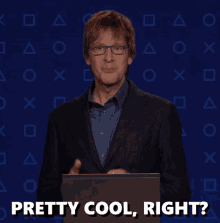Eddie-Griffin
Banned
https://mixed-news.com/en/why-psvr-2-is-more-likely-to-make-you-sick-than-other-vr-headsets/
Here is the video referred to from Brad Lynch,
It seems to be that brad is saying the dynamic diametrics of the lighting persistency (per pixel) may have been done intentionally for marketing purposes (according to the video) but allows for a lack of clarity and a higher frequency of blur, and motion blur, as a side-effect that makes it so for many people, the play experience is not very comfortable.
It gets worse at 120fps as well, so to avoid this devs may need to optimize at 90 to reduce that side-effect as much as possible. But this may be something Sony can at least partially address in software but they haven't done so yet. We will see what they come up with to address this issue later.
In the meantime it's recommended for those who have mixed or uncomfortable experiences, to reduce brightness from 0 to 25%, which may allow you to play for a longer period of time before things get unbearable.
Brad Lynch explains in a video why PSVR 2 may cause more nausea for some people and how to mitigate the problem.
The Youtuber and hardware analyst has been using virtual reality for many years with various devices and wondered why the Playstation VR 2 made him uneasy.
Lynch suspected this was due to the PSVR 2‘s high display persistence, and backed up his theory with a high-speed camera and a week-long experiment.
Persistence is the amount of time a VR display is lit during a single frame. The persistence should be as short as possible, otherwise the eye will might perceive motion blur.
Using a technique called low persistence, VR displays produce a sharp image during head movements without having to increase the refresh rate of the VR display. This technique was invented over a decade ago and was one of the most important innovations in the VR industry at the time.
PSVR 2 has higher persistence than the competition
Lynch filmed the displays of several VR headsets (HTC Vive & Pro, Meta Quest 2 & Pro, Valve Index, and Playstation VR 2) and compared the amount of persistence.
He found that the PSVR 2’s display had longer persistence than the others, even at the lowest hardware brightness levels. Lynch thinks this may be the cause of some of his nausea.
Lynch writes in his Youtube video: “The amount of light emission each pixel gives during the ‘on’ timings are the same. However, less ‘0ff’ timings make you feel it’s brighter, but at the cost of motion clarity.”
Reprojection can also cause motion sickness
Lynch recommends that people suffering from nausea set the brightness as low as possible (0 to 25 percent) in the headset’s hardware settings.
“This improved my own gameplay immensely and allowed for longer sessions with the device,” Lynch writes. He also says that the lower brightness makes the so-called mura effect, an uneven screen uniformity that can be quite pronounced on the PSVR 2, less noticeable.
To counteract the darker image, some studios (the makers of “Kayak VR: Mirage” and “Song in the Smoke”) have implemented a slider in the game menus to increase the brightness of the games on the software side.
However, the motion blur that occurs with PSVR 2 can have a second cause. I’m talking about the VR headset’s reprojection technology, which artificially doubles the frame rate from 60 to 120 in VR games like Horizon Call of the Mountain.
Only very demanding PSVR 2 games use this technique. Some titles such as The Light Brigade were optimized and subsequently switched from artificial 120 to native 90 frames per second to eliminate the motion blur.
We can only hope that Sony will improve its reprojection via a software update or that studios will optimize to native 90 or 120 hertz in the future.
Here is the video referred to from Brad Lynch,
It seems to be that brad is saying the dynamic diametrics of the lighting persistency (per pixel) may have been done intentionally for marketing purposes (according to the video) but allows for a lack of clarity and a higher frequency of blur, and motion blur, as a side-effect that makes it so for many people, the play experience is not very comfortable.
It gets worse at 120fps as well, so to avoid this devs may need to optimize at 90 to reduce that side-effect as much as possible. But this may be something Sony can at least partially address in software but they haven't done so yet. We will see what they come up with to address this issue later.
In the meantime it's recommended for those who have mixed or uncomfortable experiences, to reduce brightness from 0 to 25%, which may allow you to play for a longer period of time before things get unbearable.


